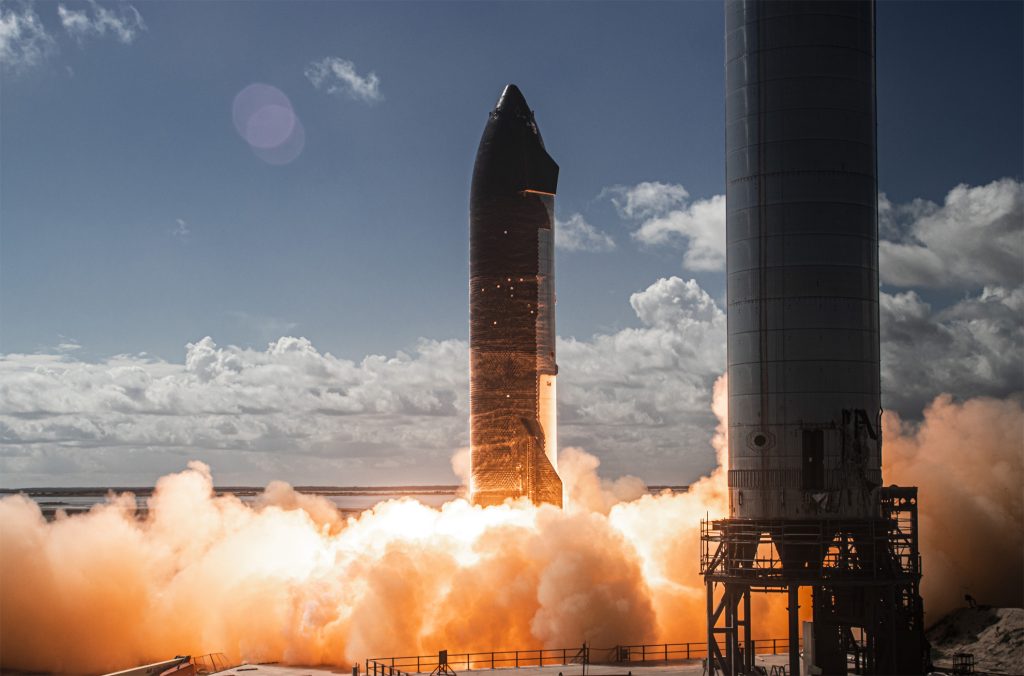Introduction: An Overview of the Next Generation of Space Launch Systems
The future of space exploration hinges on the development of more advanced, efficient, and cost-effective rocket technology. Space agencies and private companies around the world are working tirelessly to design and deploy next-generation space launch systems that will push the boundaries of human exploration and expand our understanding of the universe. These new rockets are not only designed to carry payloads into orbit more efficiently, but they also promise to make space travel more accessible, sustainable, and flexible.
In this article, we will explore the key developments shaping the next generation of space launch systems. We’ll examine innovations by companies like SpaceX, NASA’s Space Launch System (SLS), the rise of small satellite launchers, and the potential of hybrid propulsion systems. Each of these advancements is a crucial piece of the puzzle that will enable humanity to venture further into space, establish a permanent presence on the Moon, explore Mars, and beyond, all while making access to space more affordable and routine.
SpaceX’s Starship and Reusability: How SpaceX is Revolutionizing Rocket Technology with Reusable Systems
When it comes to the next generation of space launch systems, SpaceX is undoubtedly leading the way with its ambitious development of the Starship rocket. SpaceX has already made history with its Falcon 9 rocket, which features the world’s first operational reusable booster. This innovation has drastically reduced the cost of launching payloads into space, a critical advancement for the future of space exploration. However, SpaceX’s Starship takes reusability to the next level, aiming to make both the first and second stages of a rocket fully reusable.
Starship is designed to be a fully reusable spacecraft that can carry large payloads to low Earth orbit (LEO), the Moon, Mars, and even further destinations in the solar system. The spacecraft is constructed with stainless steel, which is highly durable and capable of withstanding the extreme conditions of space travel. Starship’s reusability is central to SpaceX’s mission of reducing the cost of space travel. By recovering both the first stage (Super Heavy booster) and the second stage (Starship spacecraft), the company hopes to create a truly economical, rapid-launch system that can be flown multiple times, with minimal refurbishment in between.
SpaceX’s approach is fundamentally different from traditional expendable launch vehicles, which are discarded after each launch. The reusability of Starship could revolutionize not just commercial spaceflight but also human space exploration. This system promises to make interplanetary missions feasible, potentially opening up the possibility of missions to Mars and beyond on a much shorter timeline and at a fraction of the cost.
Additionally, the Starship is designed to carry both crewed missions and large cargo payloads, making it versatile enough to support a wide range of space missions, from satellite launches to deep space exploration. As SpaceX continues to perfect the technology and perform test flights, it is positioning itself to play a pivotal role in the future of human space exploration.
NASA’s Space Launch System (SLS): A Look at NASA’s New Heavy-Lift Rocket for Deep Space Exploration
While SpaceX is focusing on reusability, NASA is investing heavily in a heavy-lift rocket for deep space exploration. The Space Launch System (SLS) is NASA’s answer to the need for a powerful, reliable rocket capable of sending astronauts and cargo beyond low Earth orbit. The SLS is designed to be the launch vehicle for NASA’s ambitious Artemis program, which aims to return astronauts to the Moon and eventually send humans to Mars.
The SLS will be the most powerful rocket ever built, capable of lifting payloads of up to 130 metric tons to low Earth orbit, surpassing the capabilities of current rockets like the Saturn V, which sent astronauts to the Moon during the Apollo program. One of the key features of the SLS is its modular design, allowing for multiple configurations based on mission requirements. The Block 1 configuration will be capable of sending cargo to the Moon, while the more advanced Block 2 configuration will be used for deep space missions, including Mars.
Unlike SpaceX’s reusable rockets, the SLS is designed to be expendable, meaning that the components of the rocket (such as the boosters and core stage) are discarded after each launch. Despite this, NASA emphasizes the rocket’s reliability and capability for missions that require extreme payload capacity. The SLS will also be capable of carrying the Orion spacecraft, which will transport astronauts to the Moon and beyond.
NASA’s SLS is expected to be a workhorse for deep space exploration, particularly for missions to the Moon, Mars, and potentially even beyond. The development of the SLS is a key part of NASA’s vision for returning humans to the Moon by 2024, with the long-term goal of establishing a permanent presence on the lunar surface and preparing for future Mars missions.

Small Satellite Launchers: The Growth of Small, Cost-Effective Launch Vehicles for Small Satellite Deployment
In addition to the larger rockets like SpaceX’s Starship and NASA’s SLS, the rise of small satellite launchers is transforming the landscape of space access. Small satellites, also known as CubeSats or smallsats, are becoming increasingly popular due to their low cost, versatility, and ability to serve a wide range of purposes—from Earth observation to communications to scientific research.
Small satellite launchers are designed specifically to carry these miniaturized payloads into space at a fraction of the cost of traditional rockets. Many of these launchers are much smaller and less powerful than their heavy-lift counterparts, making them an ideal choice for missions that require only a small payload or that are aimed at low Earth orbit.
A prime example of this emerging technology is Rocket Lab, a private space company that has developed the Electron rocket, a small, cost-effective launcher designed for small satellites. The Electron rocket is capable of carrying up to 300 kilograms of payload into a 500-kilometer orbit, offering a reliable and low-cost option for smallsat operators. Other companies, like Firefly Aerospace, Astra, and Relativity Space, are also entering the market with their own small satellite launchers.
The growth of small satellite launchers is being driven by the increasing demand for satellite constellations, such as those being deployed by companies like SpaceX (with its Starlink network) and OneWeb. These constellations are expected to revolutionize global internet access and provide critical data for Earth observation, environmental monitoring, and telecommunications. The ability to deploy small satellites quickly and affordably using dedicated small launchers will significantly accelerate the pace of satellite deployments and open new avenues for space-based services.
The Role of Hybrid Propulsion: Exploring Hybrid Engines and Their Potential in Future Rocket Technology
While chemical rockets and ion engines have traditionally dominated space travel, the potential of hybrid propulsion systems is starting to attract attention for future rocket technology. Hybrid engines combine the best aspects of liquid rocket engines and solid rocket motors, offering unique advantages in terms of efficiency, safety, and reusability.
Hybrid propulsion works by using a liquid oxidizer (such as liquid oxygen) and a solid fuel (such as HTPB, a rubber-like material). When the oxidizer is injected into the combustion chamber, it reacts with the solid fuel, creating thrust. One of the key advantages of hybrid propulsion is that it allows for more precise control over the combustion process, which can be beneficial for missions requiring fine-tuned thrust control, such as space tourism or planetary exploration.
Another advantage of hybrid engines is their reusability. Since the fuel is solid, it is easier to store and handle than liquid propellants, which require careful management of temperature and pressure. Hybrid propulsion systems can also be designed to be more environmentally friendly, as they produce less toxic exhaust compared to traditional solid rockets.
Companies like Virgin Galactic and Blue Origin are already using hybrid propulsion for suborbital space tourism and research missions. These systems could evolve into more powerful engines capable of supporting deep space missions, especially as hybrid propulsion technologies continue to improve in terms of efficiency and reliability.
Conclusion: How Next-Gen Rockets Are Transforming Space Access and Exploration
The next generation of space launch systems is poised to fundamentally change the way we access space and explore the cosmos. The development of reusable rockets, like SpaceX’s Starship, promises to drastically reduce the cost of space travel, while NASA’s Space Launch System will enable humanity to embark on ambitious missions to the Moon, Mars, and beyond. Meanwhile, the growth of small satellite launchers is making space more accessible to a broader range of industries, driving innovation in satellite technology and global communications.
Hybrid propulsion systems also offer exciting possibilities for the future of space exploration, providing more efficient, safe, and environmentally friendly options for both crewed and uncrewed missions. The evolution of rocket technology, powered by both government agencies and private companies, will open new doors to space exploration and help realize humanity’s dreams of interplanetary travel.
As these technologies continue to develop, we can expect even more exciting advancements in the coming decades. With each new rocket, we move closer to a future where space is no longer a distant frontier, but a region we actively explore, settle, and harness for the benefit of all humanity.












































Discussion about this post